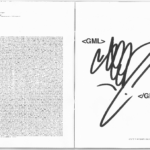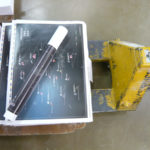A Postcard from Stuttgart
I’m in Stuttgart for a week to teach a workshop. In the school library, I read Eye Magazine.
The current issue A New Golden Age? has many familiar observations about the way typography is going through exciting times. Sybille Hagman brings up typography as teamwork and the need to divide tasks between experts. Paul Carlos: ‘Unexpected intersections and amalgations’ and Nicole Dotin: ‘The web (…) pushed all these innovations further than they would have gone on their own’ but the Free Font Movement as we know it, is sadly nowhere mentioned. Editor Deborah Littlejohn seems only one small step away though from speaking about Libre Fonts, when she summarizes typedesigners’ view on the situation:
Their description of our time as one of consolidation, efficiency, historicity and neutrality show a field still grappling with the ramifications of typography’s democratised tools. From this perspective, we get a sense of why Modernism’s default aesthetic habits die hard. Considering the reverberating ‘echo chamber’ created by constant software upgrades and new utility platforms, type designers are out of breath just keeping up.
I don’t think it is nostalgia only, that blows me away when re-discovering April Greimans early experiments with the mutable scale of digital imagery. I haven’t seen her book Hybrid Imagery since I was in school myself I think.
Greiman is a Californian designer who started to explore digital imagery as early as 1984. Hybrid Imagery is an account of her love affair with ‘The Mac’ as she affectionally calls the blend of software and hardware she was discovering at the time. Naive, of course, but some of her observations resonate:
The “undo” function allows you to take back something you just did, without a trace; or, with another click, restore it. The traditional way of thinking would call this a great way to correct mistakes. In fact, you learn to think of it as means to attempt them.
You are always working in a state of visual perfection. The first word of your first vague thought is in high-resolution 12 pt. Univers 55 type or whatever. Even raw beginnings have a finished look.
A presentation by Aram Bartholl, later that night at the Akademie, shows that 25 years later, we still are coming to terms with similar questions of location and relation.







